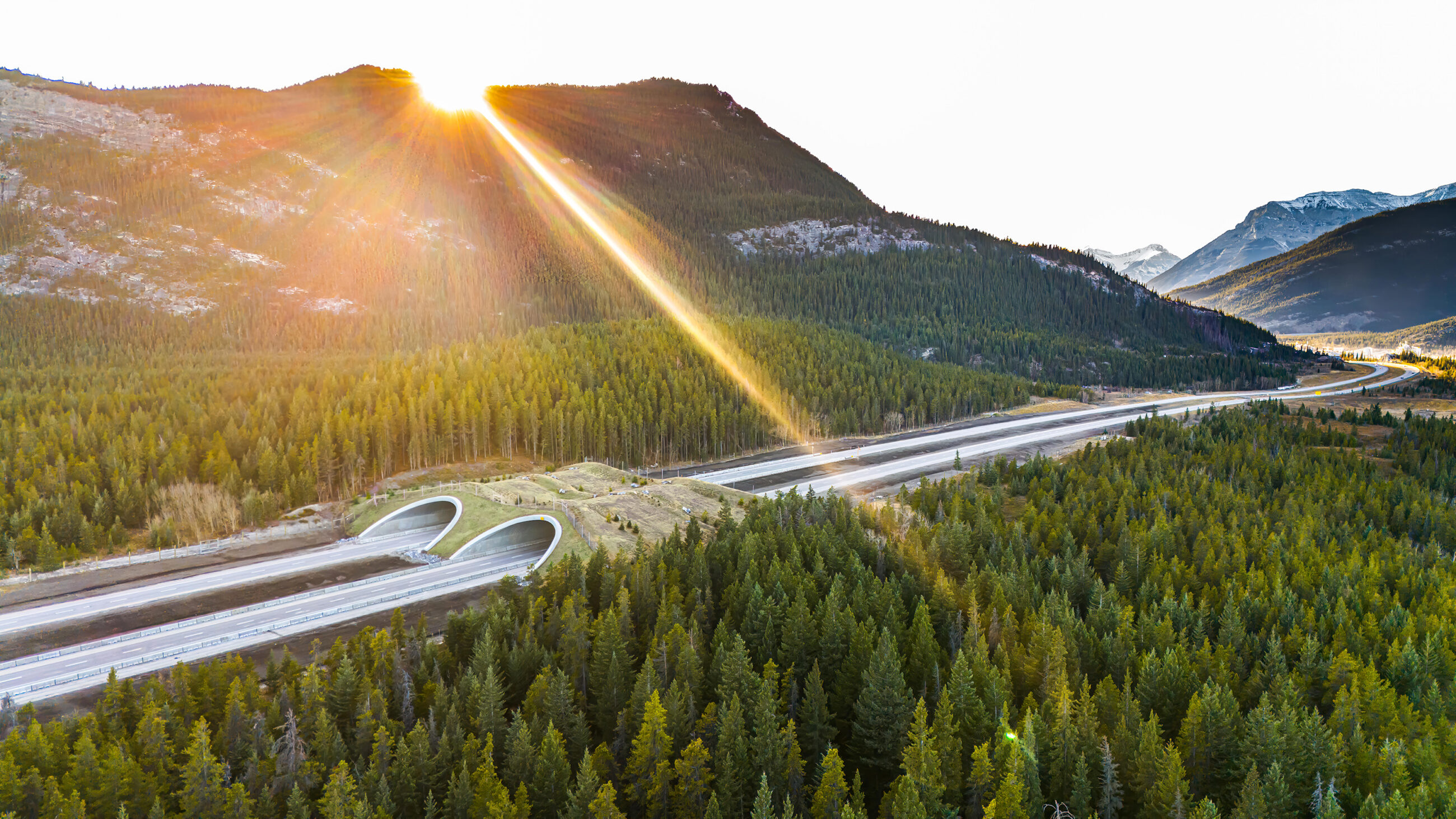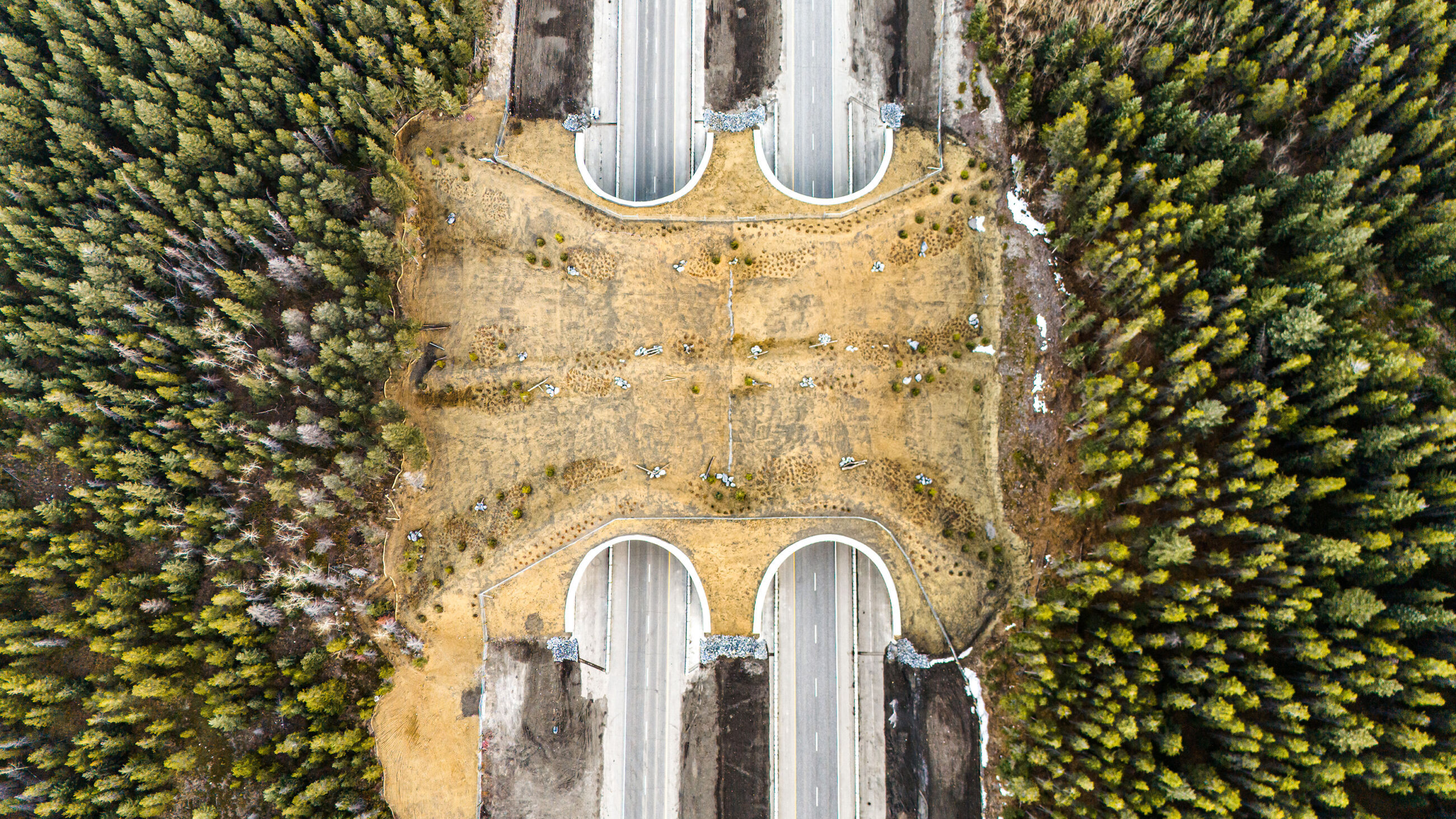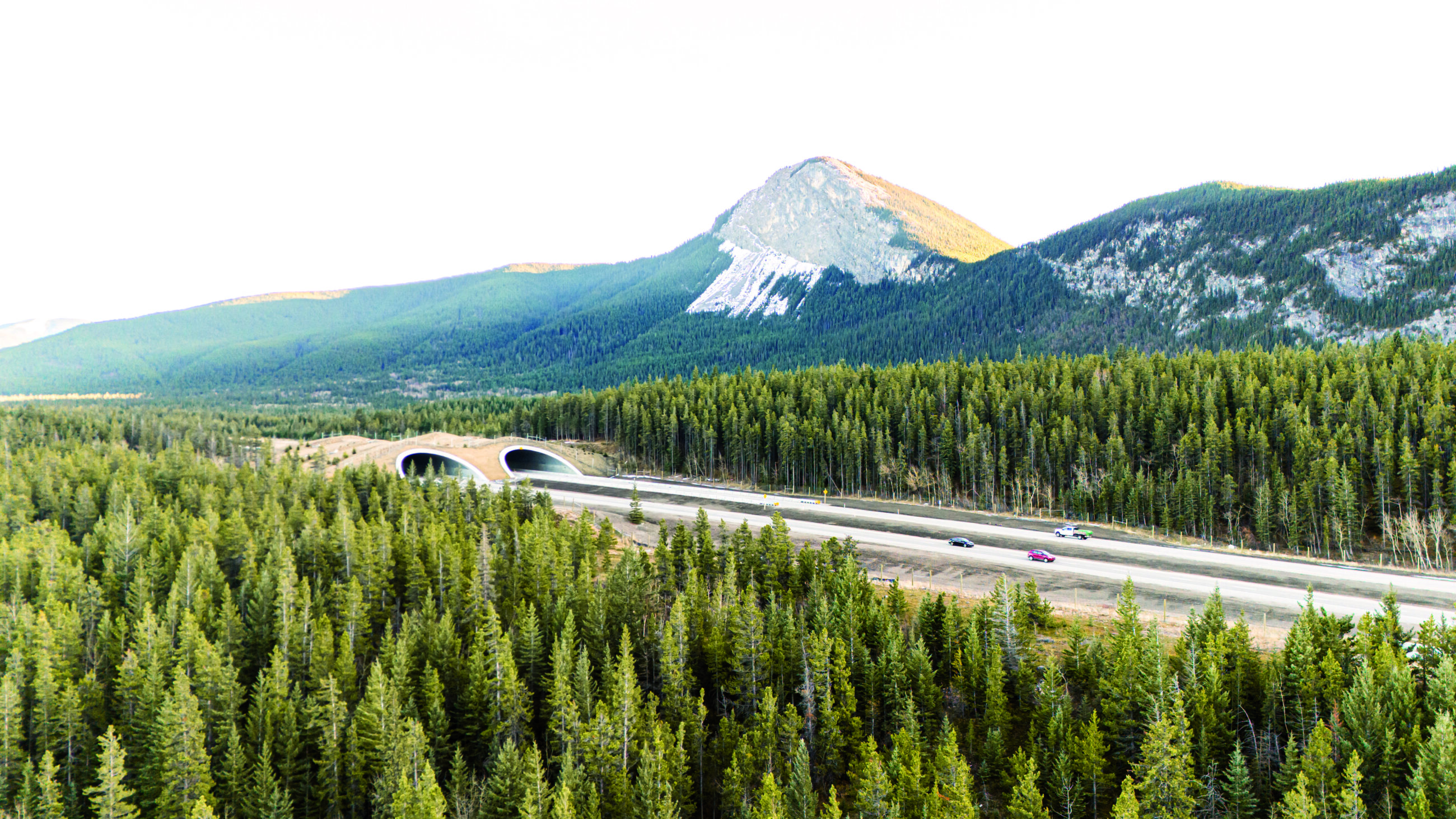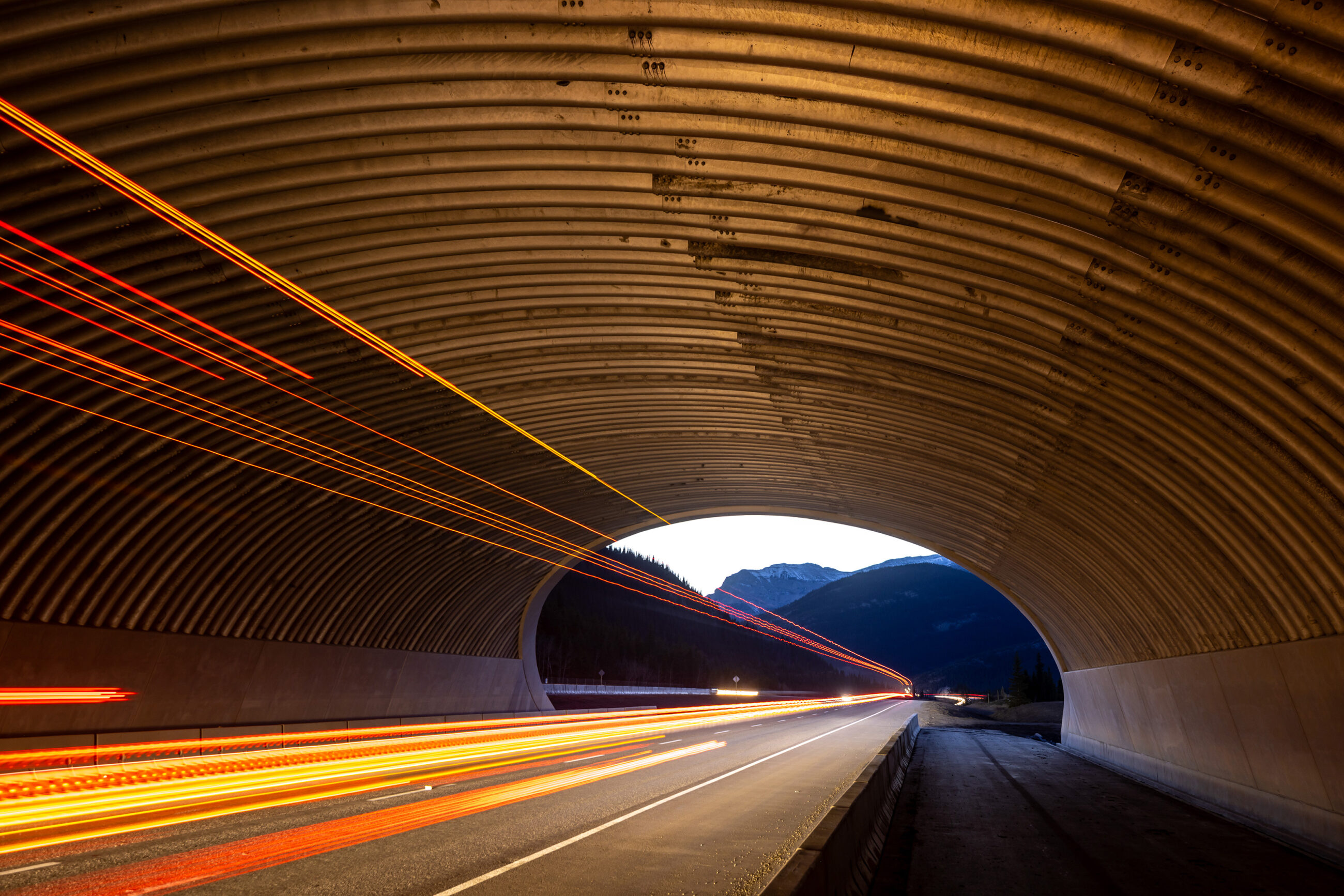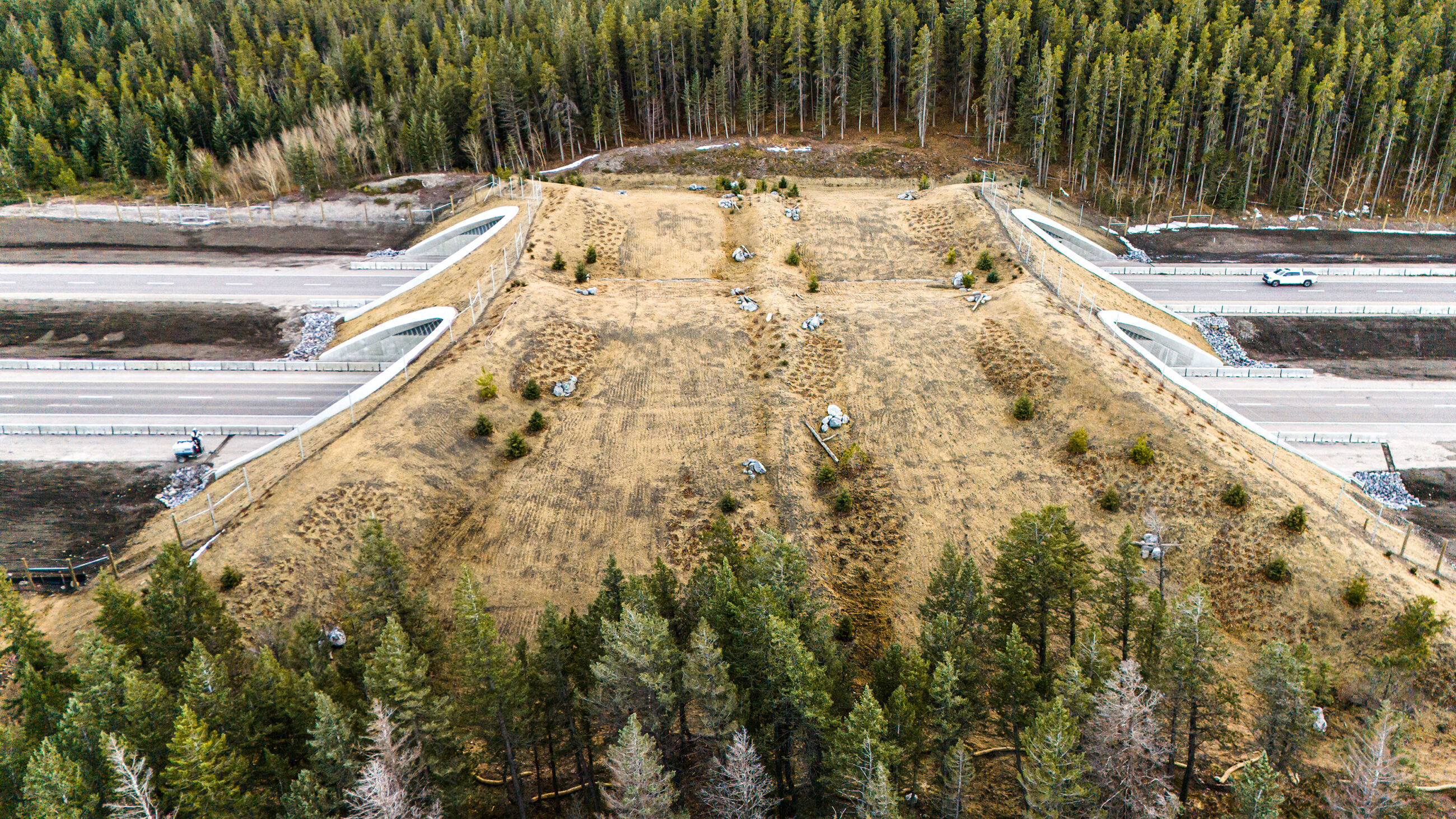A wildlife-friendly design milestone
To address the high rate of WVCs, DIALOG was contracted to design the Highway 1 Wildlife Overpass. This wildlife overpass is the first of its kind in Alberta outside of the Banff National Park. Simple and straightforward in its design and engineering, the bridge serves two distinct user groups: drivers on Canada’s national Trans-Canada Highway (TCH), and wildlife, a voiceless stakeholder group which is all too often critically impacted by anthropocentric actions. Design considerations sought to balance technical complexity, driver safety and experience, and the ecological needs of the wildlife populations it will connect. The location was selected based on traditional migration patterns, and the design responds to the topography and local ecology of the surroundings to integrate it into the landscape in a manner that is sensitive and thoughtful.
The wildlife overpass structure consists of twin corrugated steel plate arches, one over each direction of travel on Highway 1. The arches are supported by cast-in-place concrete footings and are backfilled with gravel. A thick layer of clay and topsoil on top of the backfill provides opportunity for naturalized landscaping on top of the structure. The overpass structure is over 60m wide and consists of twin steel arches, each with a span greater than 24m. The project also includes approximately 12 km of wildlife fencing.
